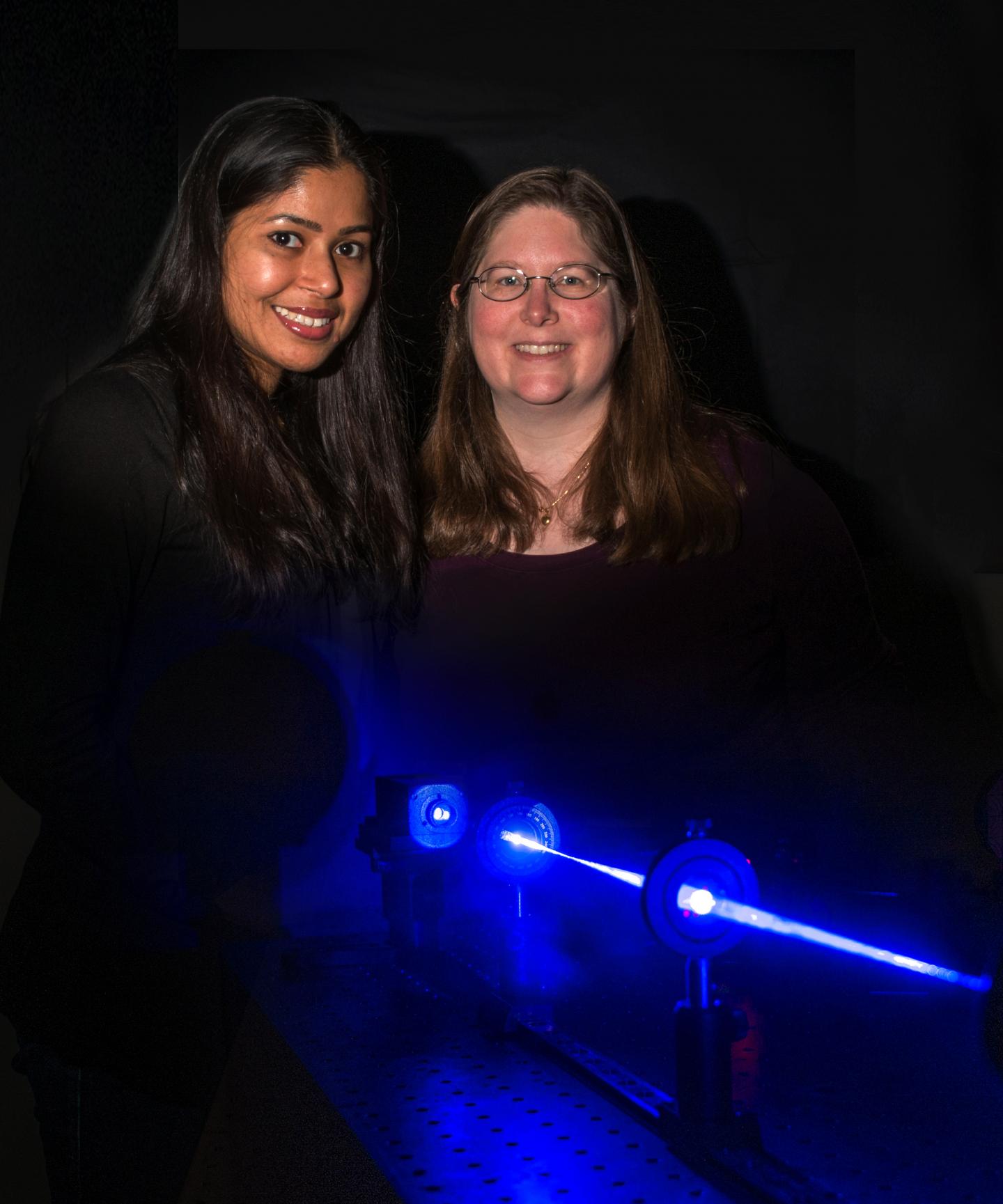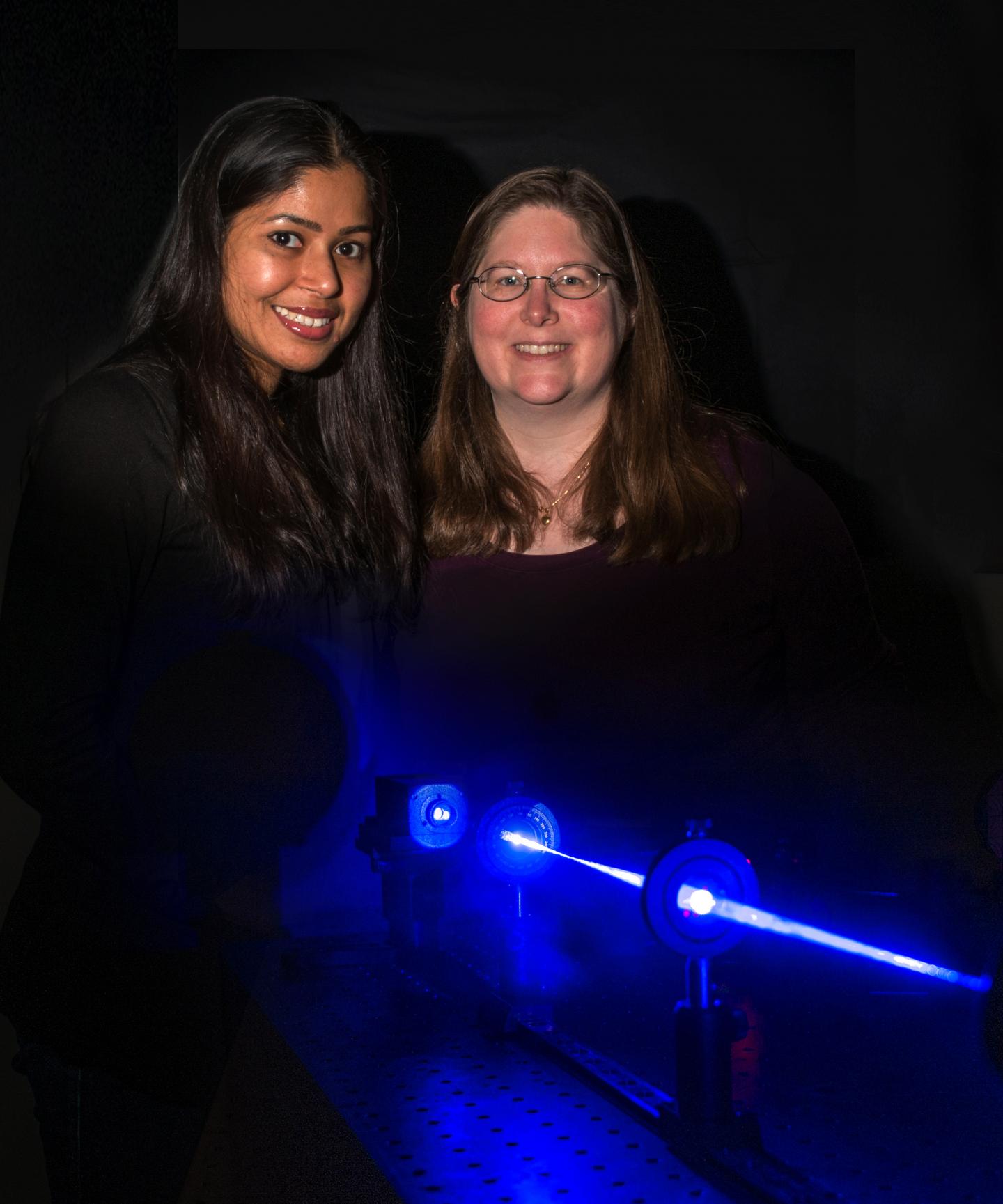
Credit: Derrick Turner
EAST LANSING, Mich. – Prion diseases are scary, incurable and fatal. They first gained notoriety when cows became infected by prion proteins and, in turn, infected people. Fervor surrounding mad cow disease resulted in the U.S. banning imports of beef from the European Union for 15 years.
New research led by Michigan State University and published in the current issue of the Proceedings of the National Academy of Sciences, offers hope by showing how we might prevent prions from aggregating or growing into deadly diseases. The results also show that an antihistamine, astemizole, proved effective in reducing prion aggregation.
Lisa Lapidus, MSU professor of physics and astronomy, has pioneered a laser technique to advance her medical discoveries. The two-laser approach measures the speed at which proteins rearrange before beginning to clump, or aggregate — the critical beginning of many neurodegenerative diseases.
"While prion's transmission method is quite unusual, the process of protein clumping is quite common in a number of diseases, such as Alzheimer's and Parkinson's disease," said Lapidus, who published the paper with Kinshuk Raj Srivastava, former postdoctoral fellow at MSU. "We've discovered that there is a 'dangerous middle range,' a speed that individual proteins rearrange in which clumping happens fastest. We were also able to find a way to bump the proteins out of the danger zone and reduce the chances of clumping from happening."
Bumping proteins out of the danger zone could help advance research on prion diseases, such as fatal familial insomnia and kuru in humans, mad cow disease, and chronic wasting disease in deer.
What these prion diseases have in common, the team discovered, is the key speed changer of pH. Using the protein from a hamster, a mammal with a history of suffering from prion diseases, the team found that prion-related protein chains reconfigure slowly at neutral pH, thus avoiding the sticky middle speeds.
However, at low pH, the scientists found the protein rearranged in the dangerous middle range, confirming that prions thrived and grew when pH levels were low. To further prove this middle regime is really dangerous, they compared the speed of hamster at low pH to rabbit, an animal that doesn't get prion disease. Rabbit prion was much faster than hamster.
"If rearrangement is fast, when two chains come into contact, they can rearrange rapidly enough to avoid making interactions that lead to clumping," Lapidus said. "When moving slow, neither chains will have sticky patches exposed. But when the rearrangements are happening at the same speed as the random collisions between two proteins, then clumping can occur more quickly."
Taking the research one step further, Lapidus and her team decided to see if any drugs could move hamster prions out of this danger zone. Lapidus proved that astemizole is effective in speeding up protein self-interactions even further and preventing prion clumping.
Astemizole was once used to treat allergies, but it was pulled from the market due to rare but sometimes fatal side effects. The antihistamine, however, also has shown promise in some Alzheimer's research.
This research didn't directly examine disease transmission, but future research could tackle this and help understand how proteins rearranging in the danger zone can be recruited by an existing clump of protein.
While this research is years away from medical trials, it at least makes prion diseases a little less scary.
###
This research was funded in part by the National Institutes of Health.
Michigan State University has been working to advance the common good in uncommon ways for more than 150 years. One of the top research universities in the world,MSU focuses its vast resources on creating solutions to some of the world's most pressing challenges, while providing life-changing opportunities to a diverse and inclusive academic community through more than 200 programs of study in 17 degree-granting colleges.
For MSU news on the Web, go to MSUToday. Follow MSU News on Twitter at twitter.com/MSUnews.
Media Contact
Layne Cameron
[email protected]
517-353-8819
@MSUnews
http://msutoday.msu.edu/journalists/
############
Story Source: Materials provided by Scienmag





